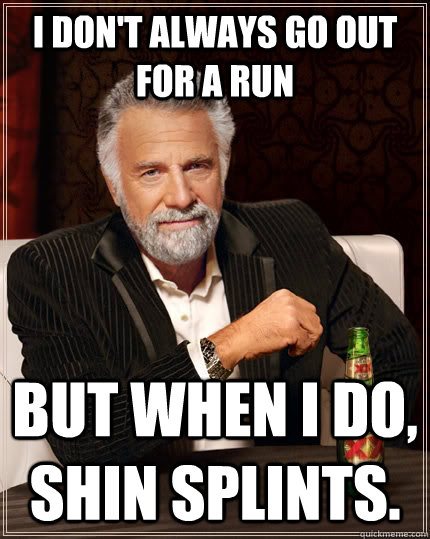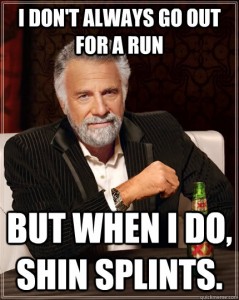
If you’re a runner, you’ve most likely heard of shin splints, but this condition can also affect other active people like basketball players, dancers, or military soldiers.
What is a shin splint, exactly?
Your shin bone, or tibia, is located in the front of your lower leg, on the opposite side of your calf. Shin splints, or medial tibial stress syndrome (MTSS), usually indicate that you are feeling some aching, pain, or swelling along this area.
Shin splints are common in sports and activities that put a lot of pressure on the tibia, like running on uneven surfaces or up hills. A major reason people experience shin splints is they start a new training regimen too aggressively instead of slowly easing into it, and this stresses the body. The repetitive stress on the shin, over time, will lead to shin splints. While doctors are not sure whether shin splints are caused by tiny tears or inflammation, there are pretty universal standards for preventing and treating shin splints.
First, if you’re suffering from pain and think you may have shin splints, it’s best to schedule a visit with your doctor to rule out any more serious conditions like a stress fracture, which is an actual break in the bone. Your doctor will want to do a physical and may want to take images of your leg to properly diagnose you. If you do in fact have shin splints, you can usually treat your symptoms at home with great success.
 Treatment for Shin Splints
Treatment for Shin Splints
Shin splints can be treated with the following:
-
- Rest
-
- Ice
-
- Compression
-
- Reduction of activities that caused the shin splints
- Over-the-counter pain relievers, as approved by your doctor
Shin Splint Prevention
What activities in your life put you at risk for shin splints? Evaluate your form and technique to see if you can modify any of them to take the pressure off your shins. For example, when you run, try to be conscious that you’re rolling from the middle of your foot to the front, instead of pounding the pavement full force and causing your shins to take the brunt of the impact.
Other practical ways to prevent shin splints are:
-
- Make sure you’re wearing the correct supportive footwear for the activities you do
-
- Start new fitness programs gradually
-
- Stretch before and after exercising to protect your body
-
- Strengthen your core
- Consider cross-training exercises like yoga and swimming to improve overall fitness and lower your risk for injury
If the discomfort of shin splints is getting you down, schedule a visit to see us at one of our Mississippi Urgent Care locations today! We’ll rule out any other potential conditions and prescribe you with a regimen to feel better as soon as possible.
